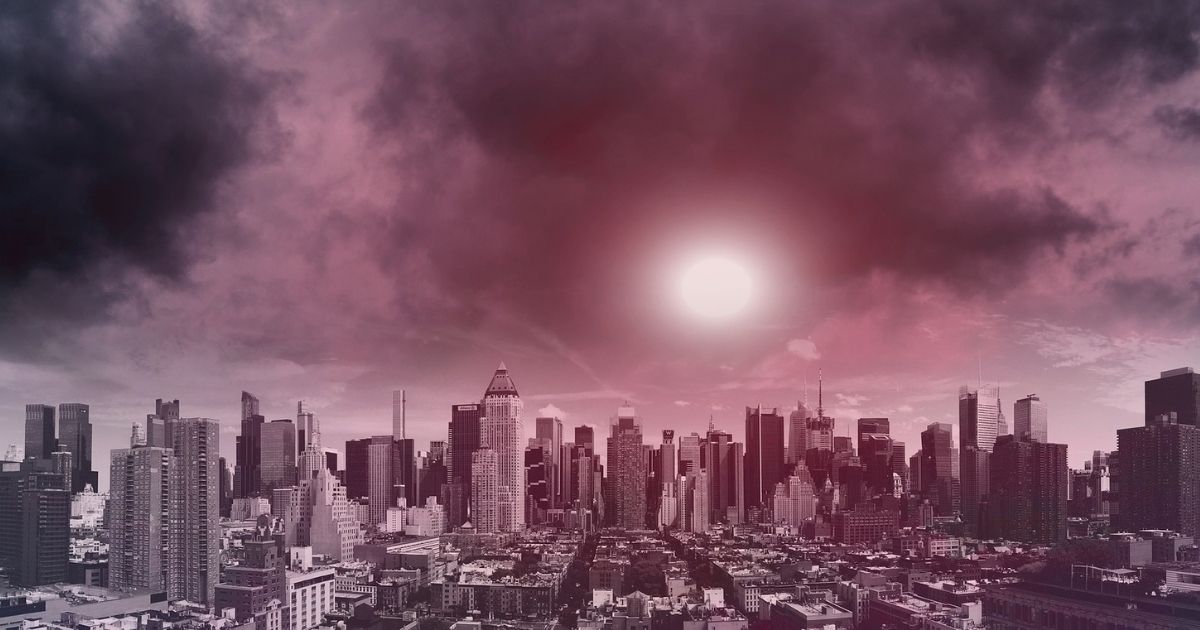
Image Credits: Pixabay
'Code Red For Humanity': Will This End All Life On Planet Earth
Writer: Zara Antoinette Kennedy
I am an aspiring journalist with an avid appreciation for the law and a chutzpah that's only seen in admirers of these disciplines. I am currently pursuing a triple major in English, Journalism, and Psychology.
India, 10 Aug 2021 9:15 AM GMT
Editor : Palak Agrawal |
Palak a journalism graduate believes in simplifying the complicated and writing about the extraordinary lives of ordinary people. She calls herself a " hodophile" or in layman words- a person who loves to travel.
Creatives : Palak Agrawal
Palak a journalism graduate believes in simplifying the complicated and writing about the extraordinary lives of ordinary people. She calls herself a " hodophile" or in layman words- a person who loves to travel.
A UN Climate Report, ringing the warning bell, has come at a time when a number of countries including Greece, Turkey, North Korea, Canada and India have been witnessing catastrophic calamities including forest fires, extreme floods, and sizzling temperatures amid the coronavirus pandemic.
The UN's climate body, the Intergovernmental Panel on Climate Change (IPCC), has delivered an 'eye-opening' warning about the plummeting climate emergency. This specific report— Sixth Assessment Report (AR6) 'Climate Change 2021: The Physical Science Basis', is the first part of the IPCC's sixth assessment report, which was delayed by almost a year owing to COVID-19.
What Does The Report Say?
The astonishing UN report of 2021 has indicated that over the next 20 years on average, global temperatures are expected to reach 1.5°C of warming. The report puts the onus on human activities that emit greenhouse gases, for the approximate 1.1°C of warming since 1850-1900.
It further says that the frequency of catastrophic climate events such as the sea-level rise would become a more common occurrence, likely to take place once every year.
Probably the most important takeaway from the report is the new estimates of the chances of crossing the global warming level of 1.5°C in the next decades. The report warns that without immediate urgent reductions in greenhouse gases, the situation 'will be beyond reach' in the next decade. The 1.5°C benchmark is imperative to be maintained or else, extreme heat would occur, making agriculture arduous.
The IPCC report 2021 said that meeting the 2015 Paris Agreement goal that aims to limit warming to 1.5 degrees Celsius will need sticking to "carbon budget". The Climate budget is the number of greenhouse gases that can be emitted for a given level of global warming.
The report further highlights the grim future of the climate by mentioning the rapid melting of ice, worsening of heatwaves and storms, greater intensity of rains, floods, and droughts, and so on. In high latitudes, precipitation is likely to increase while it is projected to decrease over large parts of the subtropics. Changes to the ocean, including warming, more frequent marine heatwaves, ocean acidification, and reduced oxygen levels have been clearly linked to human influence.
What Does It Mean For India?
The observations of the IPCC report with respect to the weather patterns and their consequences in Asia are significant in the Indian context.
Assessments made about Asian monsoons, which impact the rainfall pattern in India, is especially important considering that India depends on the monsoons as a source of life and livelihood.
"The South and Southeast Asian monsoon has weakened in the second half of the 20th century", according to an observation in the report that has been marked as "high confidence".
"In the long term, South and Southeast Asian monsoon and East Asian summer monsoon precipitation will increase", it added with "medium confidence".
For South Asia specifically, the report said that both annual and summer monsoon precipitation will increase during the 21st century, with "enhanced inter-annual variability", that is, monsoon patterns will be variable and difficult to predict from one year to the next, according to a report by The Quint.
Furthermore, the report warns us about India's mountains.
"During the 21st century, snow-covered areas and snow volumes will decrease in most of the Hindu-Kush Himalayan and snowline elevations will rise and glacier volumes will decline", the report said with "high confidence". "A general wetting across the whole Tibetan Plateau and the Himalaya is projected, with increases in heavy precipitation in the 21st century."
"For India, the predictions in this report mean people laboring in longer and more frequent heatwaves, warmer nights for our winter crops, erratic monsoon rains for our summer crops, destructive floods and storms that disrupt power supply for drinking water or medical oxygen production," said Ulka Kelkar, director, climate program, World Resources Institute India (WRI).
''We need to plan for climate risks while building our cities. We need technology that revolutionizes the way we manufacture – with green hydrogen and with recycling. And we need to use our land and natural resources responsibly to support livelihoods," she added.
Environment Minister Bhupender Yadav also said the report was "a clarion call for the developed countries to undertake immediate, deep emission cuts and decarbonization of their economies".
Also Read: As Extreme Weather Events Rise, More People Are Being Displaced
 All section
All section













